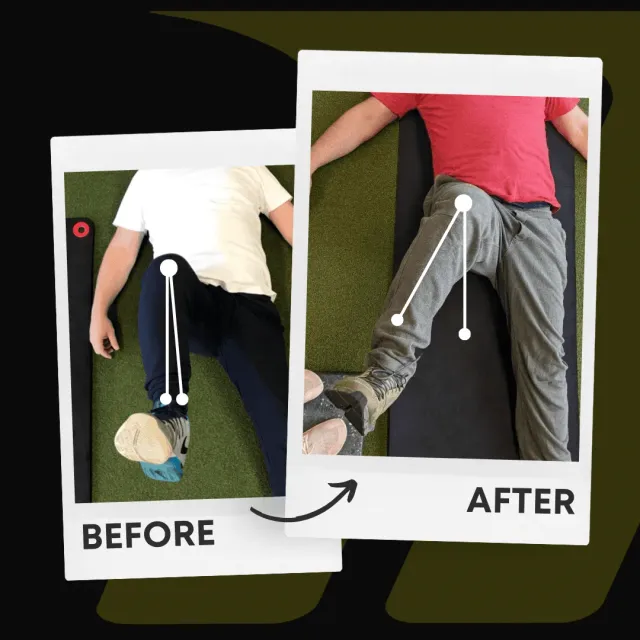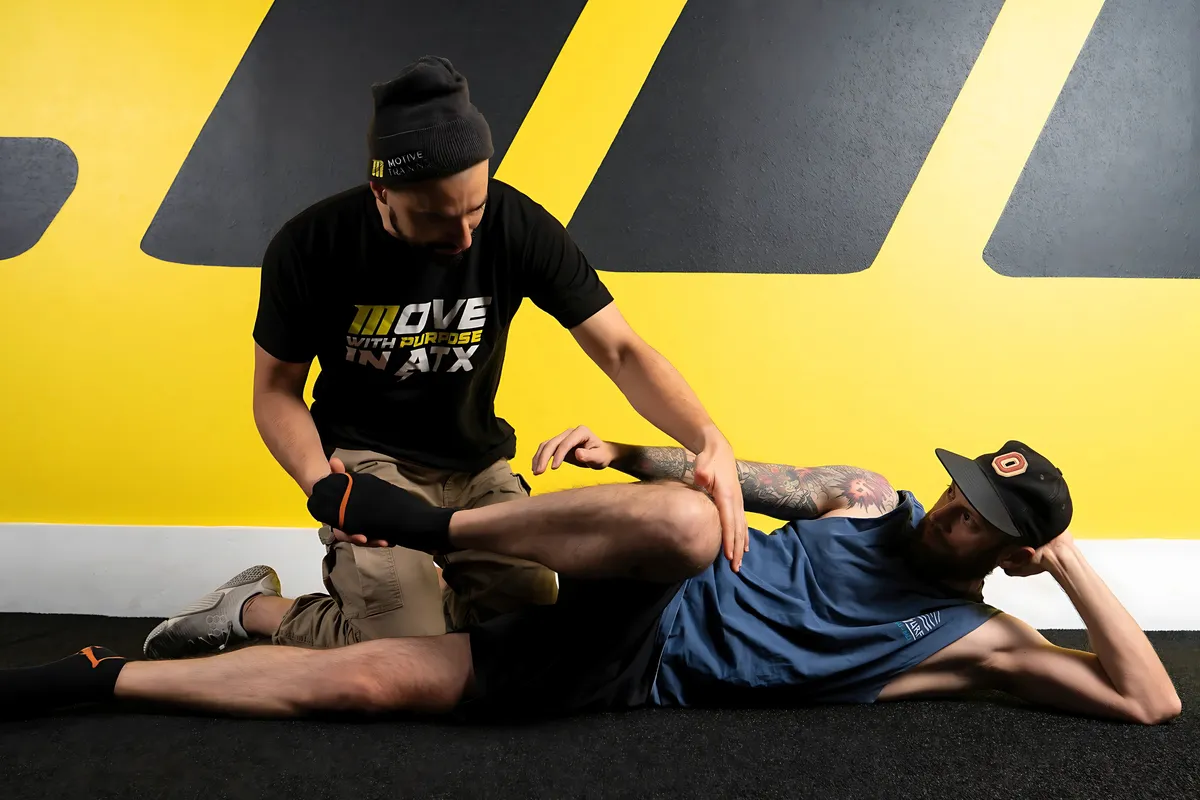No Wonder You Have Neck Pain
May 12, 2023 | Healthy Living

Let me paint you a picture. The year is 2048. You have a solid career, a family you love and cherish, a dream home with a white picket fence, and friends galore. Yet, even though it’s twenty-five years into the future, you’re somehow driving a gas-powered car (just humor me). On your way to the office in the morning after a hearty breakfast with your partner and kids, you abruptly avoid an accident in front of you on the highway. In a panic, and like a good driver, you quickly check your blind spot, switch lanes, and avoid the collision in front of you.
Thankfully, you safely avoid the accident. But, unfortunately, your neck went into spasm, and you can’t move your head for weeks.
Is this a ridiculous scenario? Perhaps, but I know a boatload of people who have hurt their necks doing the simplest things. That’s why neck pain is one of the most common complaints I hear from friends, family, and clients.
So, why do you have ongoing neck pain? Is it genetics, poor posture, lack of movement, or something else? Let’s dig in.
What is A Neck?
The neck, also known as the cervical spine, is a complex structure made up of seven vertebrae, muscles, ligaments, and nerves. Its primary functions are to support the head’s weight and protect the spinal cord. However, the neck also plays a vital role in allowing us to move our heads in various directions. You can look at the neck controlled articular rotations (CARs) video below for a better idea of how the head and neck can move.
This intricate structure of the neck is continuously working throughout the day, even when we’re not consciously thinking about it. Every time we nod, turn our heads, or tilt our heads to the side, the neck is hard at work. Because of its essential role in our daily lives, it’s crucial to take care of this vital body part and address any issues that may arise.
Does Posture Matter?
Poor posture is considered one of the leading contributors to neck pain. Slouching, hunching over, and craning your neck forward can all create undue stress on the neck muscles and cervical spine. Over time, and without adequate movement, this poor posture can lead to muscle imbalances, joint dysfunction, and even spinal degeneration.
One of the most common postural issues is “forward head posture.” This occurs when the head is positioned too far forward in relation to the shoulders, causing strain on the neck muscles and ligaments. Forward head posture is often the result of spending long hours sitting at a desk, working on a computer, or even just looking down at our smartphones. However, a recent meta-analysis showed that forward head posture wasn’t always a cause for neck pain; it was only sometimes related to neck pain (1).
Regardless, it’s important to understand that how you move (or don’t move) will impact your neck and posture. Remember to practice proper alignment throughout the day. Pay attention to how you’re sitting and standing. Make an effort to move your neck through its full range of motion (cue neck CARs). Additionally, try incorporating regular breaks and gentle stretches into your daily routine to help maintain good posture and alleviate neck pain.
Technology Is At It Again
In today’s modern world, technology plays a significant role in our daily lives. From smartphones to laptops, we’re constantly connected to our devices. But unfortunately, while technology has undoubtedly made our lives more convenient, it has also contributed to the growing epidemic of neck pain.
The term “text neck” has been coined to describe the strain on the neck caused by constantly looking down at our devices. Research shows that text neck is not only real but a serious problem (2). This unnatural position causes the muscles and ligaments in the neck to become overworked and exhausted, leading to pain and discomfort. Additionally, the effects of text neck can be compounded by other factors, such as poor posture and sedentary lifestyles.
To minimize the impact of technology use on your neck pain, consider taking regular breaks from your devices and practicing proper posture. For example, hold your phone or tablet at eye level to avoid looking down, and position your computer screen at a comfortable height to reduce neck strain.
How Stress Can Impact Neck Function
Stress is another significant factor that can contribute to neck pain (3). When we experience stress, our bodies tend to respond by tensing up, and this tension is often most noticeable in the neck and shoulder muscles. Over time, chronic stress can lead to muscle tightness and stiffness, causing neck pain and discomfort.
Finding healthy ways to manage stress can positively impact your overall well-being and help alleviate neck pain. Some stress-reducing techniques include deep breathing exercises, meditation, yoga, and regular physical activity. Additionally, making time for hobbies and activities that bring you joy can effectively reduce stress and its impact on your neck pain.
Sleep Hygiene matters, too
How we sleep can also play a role in developing neck pain. For example, sleeping in an awkward position or using a pillow that doesn’t provide proper support can put undue stress on the neck muscles and cervical spine. This can lead to stiffness, discomfort, and a decrease in overall sleep quality.
To improve your sleep habits and reduce neck pain, consider investing in a supportive pillow that maintains the natural curve of your neck. Additionally, try sleeping on your back or side, as these positions can help maintain proper spinal alignment and reduce strain on the neck. Lastly, establish a regular sleep schedule and create a relaxing bedtime routine to promote better sleep and overall health.
Movement is ultimately the key
If it’s not clear yet, lack of movement and sustained positions (e.g., forward head posture, a flexed neck, slumping, etc.) can play a serious role in neck pain. Thus, it’s essential to exercise regularly and learn how to move and stretch your neck as needed. If you’re not 100% sure where to start, check out our Functional Range Assessment so we can show you how your neck is meant to move. In the meantime, try some of these exercises out; just be sure to do them gently and avoid any pinching or pain.
- Neck CARs: Taking your neck and head through its full available range of motion (e.g., flexion, extension, lateral bending, rotation).
- Capsular CARs: Emphasizing specific ranges of motion that need more attention (e.g., flexion and rotation).
- Neck Retraction/Protraction (Chin Tucks): Learning to tuck the chin and peek it forward. Think of retraction as the opposite of forward head posture.
Preventive Measures to Avoid Neck Pain
Preventive measures can help you avoid neck pain and maintain good overall health. Some preventive measures you can take to avoid neck pain include:
- Maintaining Good Posture: Practice proper alignment while sitting, standing, and walking. For example, keep your head aligned with your shoulders (retraction or chin tucks), and avoid slouching or hunching over.
- Staying Active: Regular exercise can help strengthen the muscles that support the neck and reduce the risk of injury. Consider incorporating activities such as strength training, walking, and yoga into your routine.
- Taking Breaks: If you spend long hours sitting at a desk or using a computer, take regular breaks to stand up, stretch, and move around. This can help reduce the strain on your neck muscles and prevent stiffness.
- Ergonomic Adjustments: Ensure your workstation is set up correctly to promote good posture and reduce the risk of neck pain. Adjust your chair, desk, and computer screen to ensure proper alignment.
- Getting Enough Rest: Make sure you’re getting enough sleep each night and establish a regular sleep schedule. Adequate rest can help reduce stress and tension in the neck muscles.
Conclusion: Taking Care of Your Neck for a Pain-Free Life
Neck pain can be a significant source of discomfort and can significantly impact your quality of life. Heck, you might even have neck pain now, so I’m preaching to the choir. However, understanding the common causes of neck pain and taking preventive measures to address them can reduce your risk of injury and alleviate your discomfort.
Remember to practice good posture, take regular breaks, and move your neck as often as possible to keep it healthy and mobile. Additionally, be mindful of the impact of technology use and stress on your neck, and take steps to manage these factors effectively.
By taking care of your neck, you can enjoy a pain-free life and maintain good overall health and well-being. But don’t stop there. Take care of the rest of your body, too. Learning how to overcome pain, improve mobility, and strengthen your joints and muscles will lead to a happy, longevous life.
References
- The Relationship Between Forward Head Posture and Neck Pain: a Systematic Review and Meta-Analysis
- Text Neck Syndrome in Children and Adolescents
- Neck pain: global epidemiology, trends, and risk factors
Written by

Motive Training Staff
We’ll teach you how to move with purpose so you can lead a healthy, strong, and pain-free life. Our headquarters are in Austin, TX, but you can work with us online by signing up for KINSTRETCH Online or digging deep into one of our Motive Mobility Blueprints.

